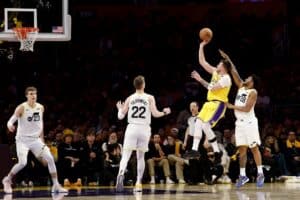The term unit is tossed around frequently in a casino’s sportsbook. Phrases such as “I just won 2 units” or “I lost 5 units on that game” are all commonly used.
This guide from the experts at OddsTrader will ensure that you have a complete understanding of what a unit is and how to apply this to your sports betting strategy.
What are Sports Betting Units?
Sports betting units are the measure by which serious bettors monitor their success. Instead of using wins and losses or dollars wagered, units are a standard way of measuring how profitable a bettor has been.
If you prefer to play a lot of underdogs on the moneyline in hockey or baseball, you are likely to have a poor win percentage, but you may be very profitable based on those underdog prices.
The opposite can be true for those that prefer betting on favorites on the moneyline at sportsbooks like Bet365 (check our Bet365 Review). By betting on favorites, you could win 60% of your games and still lose money because of the prices that you are laying. Managing units is important to maintaining a consistent bankroll.
How Do You Calculate Units?
Money management is the most important part of becoming a successful sports bettor, and it’s often the least talked about. Come up with your starting bankroll. That’s the money that you have put aside specifically for sports betting and nothing else.
Your betting bankroll should not be tied to any other activities. Now divide that bankroll by 100. That number should be your starting unit size.
When you win and your bankroll increases, your unit size should increase with it. Conversely, if you lose, your unit size should decrease to reflect your smaller bankroll. It should be a fluctuating process.
Why Do Sports Bettors Use Units?
Because no two bettors have the same bankroll. If you recommend a $200 play to someone, you have no idea if $200 represents a drop in the pan to them or their entire bankroll. If you recommend a two-unit play to someone, they can easily figure out what that means to them and how they should appropriately wager based on their bankroll size.
How Should Wins and Losses be Calculated?
This is a matter of personal preference and you will likely get different answers from different bettors. In the world of point spread betting with -110 odds, it is customary to wager $110 to win $100. You are betting the juice up-front to win a unit (in this case, $100).
It is less common to wager a unit ($100) to win $90 and change. So for a one-unit point spread bet with -110 odds, you would risk 1.1u to profit 1u. If you bet one unit on a +120 baseball underdog, you would be risking 1u to profit 1.2u. Some bettors prefer to play a flat unit regardless of the juice. So a 1u bet for them on a point spread with -110 odds would return 0.9u because they didn’t lay the juice upfront.
Risking Multiple Units
As a show of confidence in a bet, a bettor will commonly risk more than one unit per bet. Sports bettors generally have a predetermined max bet size as well. When the confidence is high the unit size follows suit.
Betting multiple units is risky as a bettor can get caught up in trying to reach for results. If a two-unit size bet loses and is then countered with a 5 unit bet size next you can start to see how someone would lose an entire bankroll in a hurry. Additionally, predicting that one result is more of a guaranteed winner over another is also quite tough to do.
That said, despite some of the concerns sports handicappers will release plays at varying unit sizes. The increase in units is driven by confidence. Confidence will always play a role in determining the unit size for any given bet.
Risking multiple units with success is how a bettor can have a losing record, but be up money. If the big unit-sized bets are winning then it will make up for a bunch of small unit size bets losing.
The flip side can be true as well for those that win small unit bets but lose out on cashing their big unit-sized bets. This will result in a winning record, but a diminished bankroll.
Parlays are about as common as a weekly trip to the grocery store, but bettors generally risk fewer units on these. That is because of two factors. The increasing difficulty of the bet winning due to multiple events within one singular bet and the increased payout will necessitate a common bet size of a half unit for example.
And remember to check back for more betting strategy at the OddsTrader blog. Happy betting!









